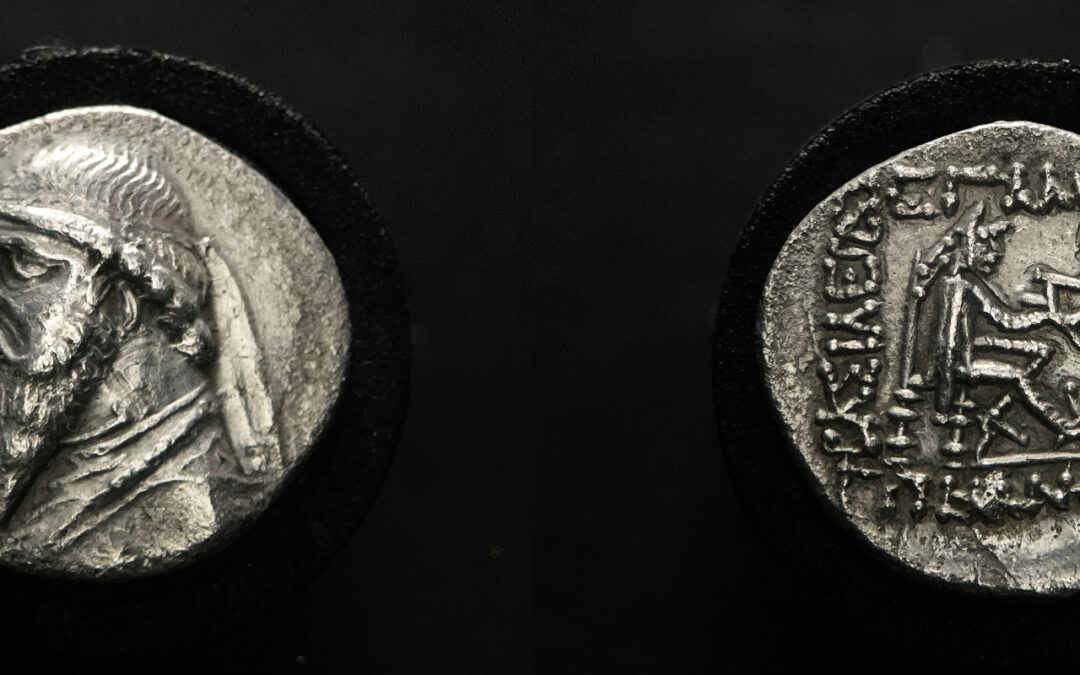
by Hooman | Aug 29, 2025 | Kings of Parthia
Historical Context Mithradates II (r. ca. 124–88 BC) is remembered as the “Great King” of the Parthian Empire, who solidified its political supremacy, expanded its borders, and made the Arsacid state a major diplomatic power. This drachm was struck during one of his...
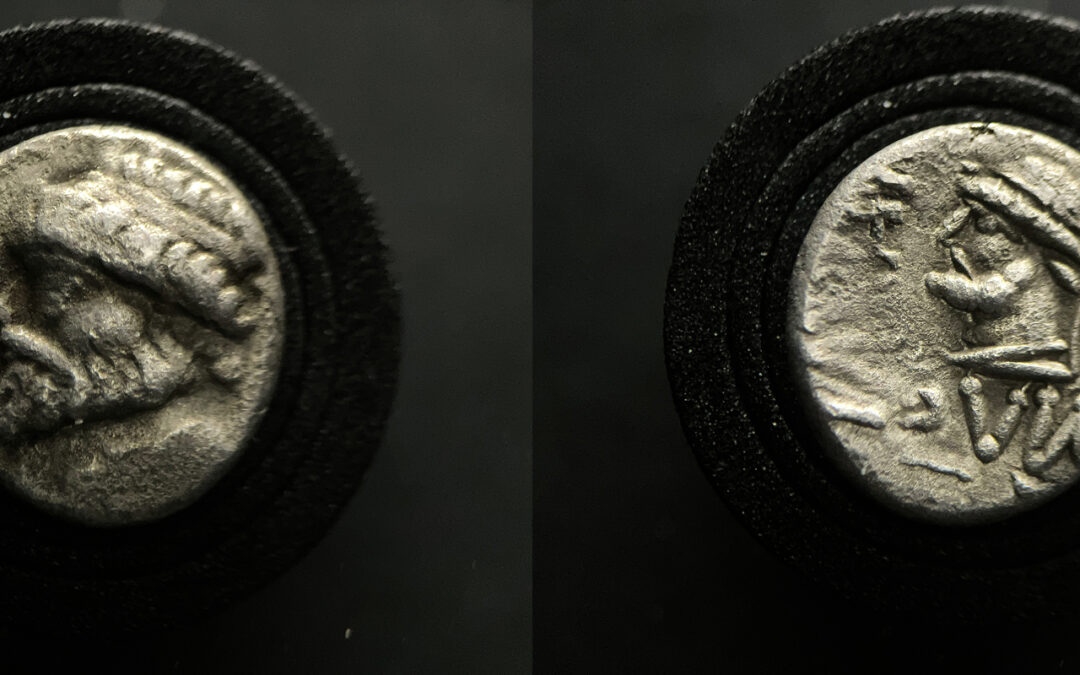
by Hooman | Aug 29, 2025 | Kings of Elymais
Silver Drachm of Kamnaskires V Dynastic Identity in Greek Script Elymais, a semi-independent kingdom in southwestern Iran, thrived during the late Seleucid and Parthian periods. Its kings issued coins that combined Greek stylistic elements with Iranian dynastic...
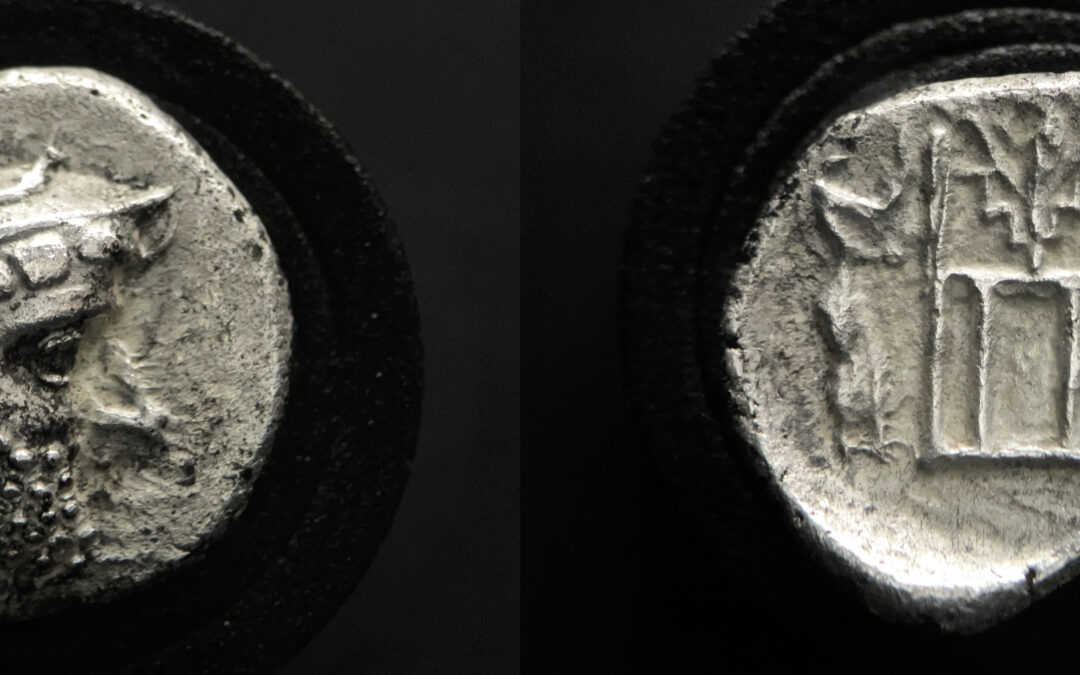
by Hooman | Aug 21, 2025 | The Kings of Persis
Silver Drachm of Darios I A Coin of Zoroastrian Continuity Minted in Persis (modern Fars, Iran), this silver drachm (1) issued by Darios I, one of the Kings of Persis, offers a visual declaration of spiritual identity. While ruled nominally under Seleucid or Parthian...
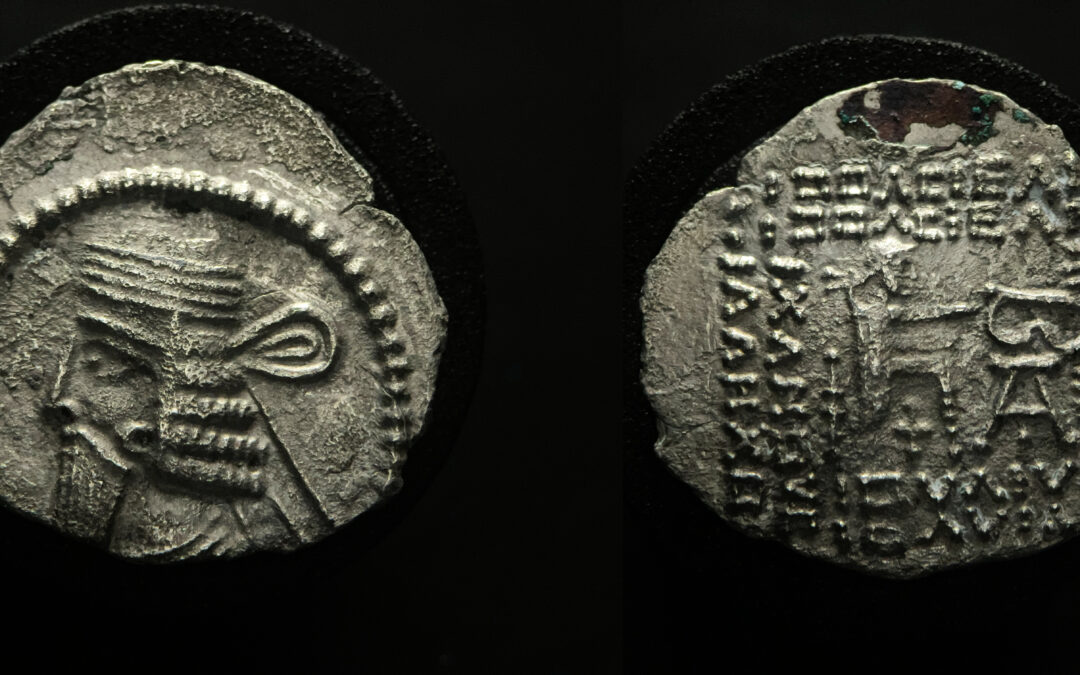
by Hooman | Aug 21, 2025 | Kings of Parthia
Vologases I Silver Drachm from Ekbatana: A Historically Rich, Accessible Coin Struck during the reign of Vologases I between AD 51 and 78, this silver drachm is an excellent example of early Parthian imperial identity. It was minted in Ekbatana, one of the most...
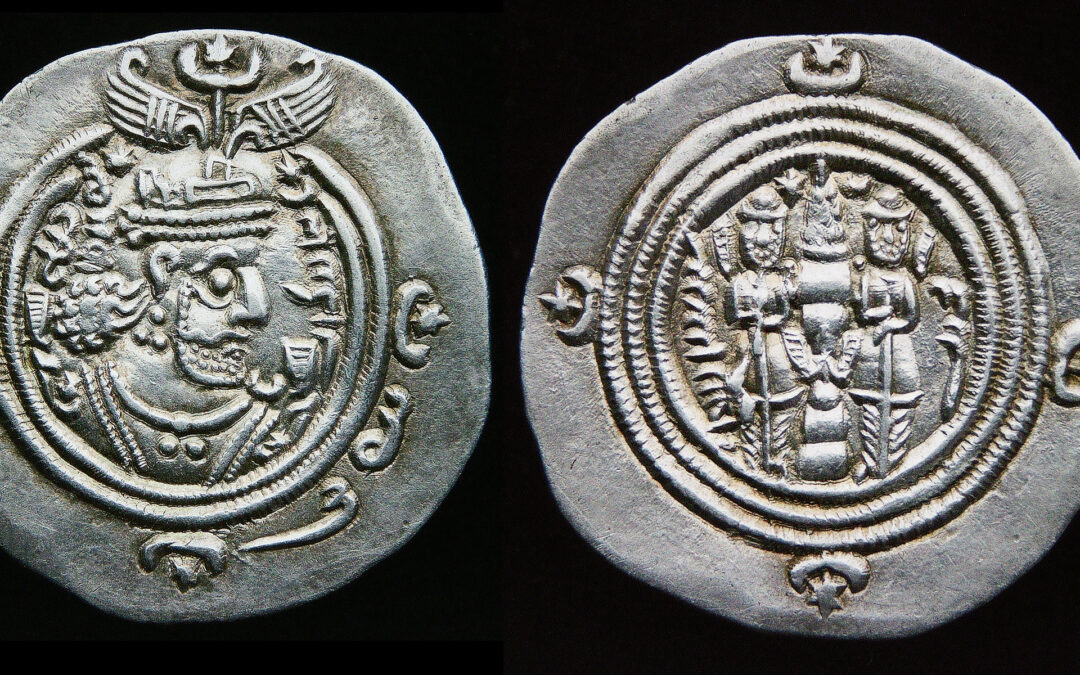
by Hooman | May 23, 2025 | Sasanian Empire
Decoding Names, Mints, and Dates in Middle Persian (Pahlavi) Reading the Language of Empire The coins of the Sasanian Empire (224–651 AD) are among the most visually detailed and symbolically rich artifacts of the ancient world. For collectors and historians, reading...






